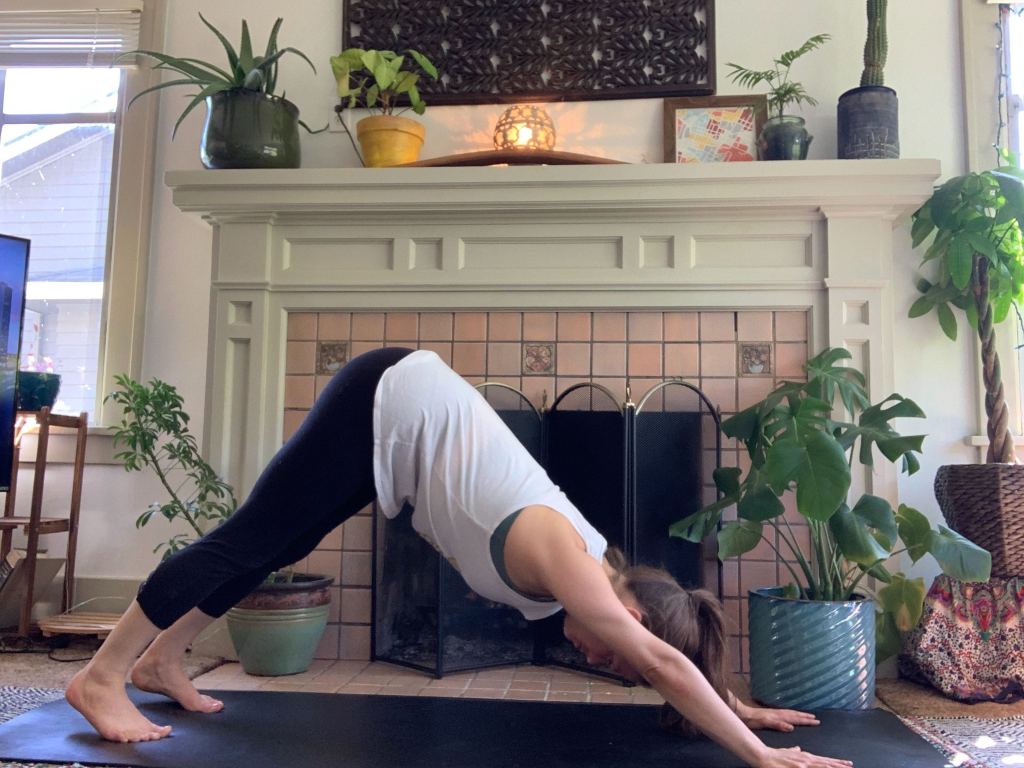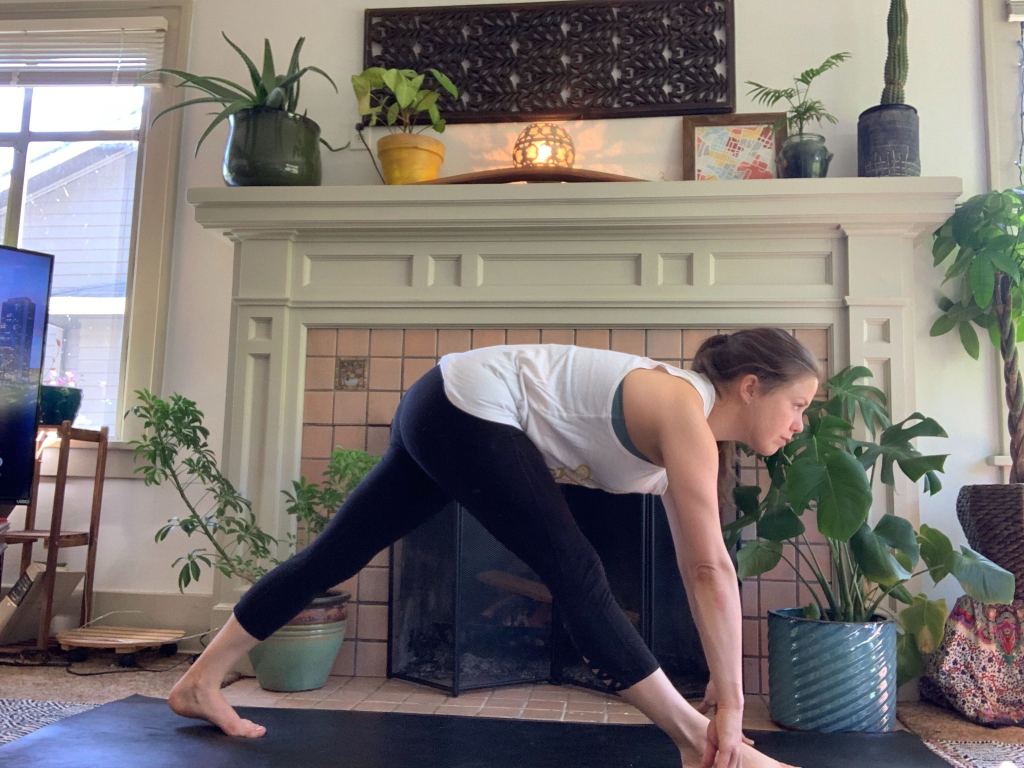A fitness regimen can make our outdoor pursuits—whether that’s a multiday cycling trip or weekly neighborhood runs—a little easier. Sometimes, however, it’s not possible to train outside, especially right now. Due to COVID-19, people who live in densely populated places or who are particularly vulnerable to developing complications from the virus may opt to stay indoors. To adapt, people are finding creative ways to bring the outdoors inside. Some have even turned their living spaces into campsites. This creativity extends to at-home training routines, too. Here are some favorite tips and workouts for an indoor fitness plan that can help prepare us for when it’s time to head outside again.
Set a Goal That’s Personal
It’s often easier to find motivation and stick to a training routine when you know why it matters to you. Do you want to regain the flexibility of certain muscle groups? Strengthen your core? Dedicate yourself to a morning yoga practice? Set the intention. Then, decide why you want to accomplish it. It could be that your yoga practice helps you manage stress and devote daily time to yourself. Or that regaining flexibility will make future runs more comfortable. Perhaps you want to strengthen your core to prepare for that next backpacking trek. The goal can be as simple as creating some daily head space or as ambitious as training for a bucket-list race.
Create a Routine
Decide on the time and place you’ll be training each day. To help you commit to your plan, pick a time of day you know you’re most likely to be free and have the energy to workout. Determine how many days a week (and for how long) you plan to train. Then, make this routine a habit. James Clear, author of Atomic Habits, suggests pairing a habit you want to form (in this case, at-home training) with a habit you already have. For instance, if you want to start incorporating a yoga flow into your morning, you could decide that the moment you finish drinking your coffee, you sit down on your yoga mat to stretch. Pretty soon, your flexibility regimen will become as non-negotiable as your cup of joe.
Design a Workout Space
Whether it’s in your garage, yard, basement or a corner of your living room, designate a space to train. Pick a spot that’s spacious enough to move freely and to set up any equipment you plan to use. It’s best if it’s an area that you know will be available each day (as in, it won’t be needed by roommates or family members), even if it’s just a corner of your bedroom. Then, consider ways to personalize it. If your goal is to de-stress with a yoga practice, make sure it’s a quiet space where you can unroll your yoga mat. Consider adding some candles, an essential oil diffuser or a few indoor plants to create a relaxing ambiance. If your routine requires weights, yoga straps, bands or other gear, place those items nearby for easy access. Wanting to incorporate nature? Set up your workout station near a window, so you train with a view. And if you like to sweat to music (or stretch to nature sounds), consider creating a playlist on your phone or other device.
Choose Equipment
Just as it’s vital to have the right gear for a trek outdoors, it’s important to have the correct equipment for an effective workout. If increasing flexibility or improving your yoga practice is the goal, consider yoga straps, a block or a mat. These yoga tips for beginners can help you decide which tools will enhance your practice, depending on your objective. You can also check out this guide for choosing the right yoga mat. If your aim is to improve strength, consider adding weights or resistance bands to your at-home setup. Wanting to increase your endurance as a cyclist? Hook up your road wheels to a bike trainer for an at-home ride. (Here’s our guide to cycling indoors.) And no matter the workout—don’t forget to give your muscles the post-workout TLC they deserve. Unwind those knots with these foam-roller exercises and our favorite gear for workout recovery.
Get Started with These Routines
Breathwork to relieve anxiety and stress
Yoga breathwork can help you manage your stress levels and add a bit of ease to your day. Deep breathing exercises actually increase the supply of oxygen to your brain and stimulate the parasympathetic nervous system, which promotes a state of calmness, says Emily Pickelhaupt, a certified yoga instructor and SEO associate program manager at REI. For those wanting to try it, she suggests this simple exercise: To start, find a comfortable seat on your yoga mat. If you want, you can sit on a pillow or block to prop yourself up and lengthen your spine. Close your eyes, relax your shoulders, lift the crown of your head toward the ceiling, and rest your hands in your lap. Slowly inhale through your nose. Exhale through your mouth. To maintain a slow breath, count to four as you inhale and five as you exhale. Then, with each breath out, add another second (so you’ll exhale to a count of five, then six) until you reach eight counts. Next, gradually make your way back down to a four-count exhale. Tip: If any thoughts enter your mind, gently bring your attention back to your breath.

Yoga to increase flexibility
Improving flexibility can play an important role in any outdoor enthusiast’s routine. It can help prevent injuries and balance problems, allowing you to do more of what you love outside. Pickelhaupt suggests a few yoga moves to improve your stretching routine.
Downward Facing Dog (Adho Mukha Svanasana)
This move stretches your whole body, especially your back and hamstrings. If you feel inclined, you can add movement to this pose by bending and straightening your legs, one at a time. Allow the head to hang heavy and move it side to side like you’re shaking your head “no.”

Wide-Legged Forward Fold (Prasarita Padottanasana)
To do this pose, get into a Low Lunge with your right food forward, then spin all 10 toes toward the right side of the room. Bring the feet parallel to the outer edge of your mat, hinge at the hip and fold forward (as seen in the photo). This movement is great for stretching your hamstrings and back. To add extra depth to this stretch, clasp the hands together at your lower back, then bring that monofist up and over to open up the shoulders.
 Low Lunge (Anjaneyasana) to Pyramid Pose (Parsvottanasana)
Low Lunge (Anjaneyasana) to Pyramid Pose (Parsvottanasana)
This sequence is great for stretching your quads, hamstrings, groin, calves and hips. Begin in Downward Facing Dog, then inhale as you lift your back leg and bring it forward to rest between your two hands. From there, take a low lunge with your hands still planted on the ground. Next, inhale as you lift your chest and gaze toward the sky. Then send the hips up and back as you exhale, forming a “V” with your legs. Make sure to keep your hips square to the front of the room. You can choose to add movement to the pose by shifting the move from lunge to pyramid variation (keeping your back heel up), inhaling as you lunge and exhaling as you move into pyramid. If the stretch is too deep for you, Pickelhaupt suggests placing blocks on either side of your front foot and placing your hands on them. This will give you some extra height.

Training for hiking, cycling, climbing and more
We know you love being outside (we do, too), but you can still train for some of your favorite outdoor adventures from your home. Check out our Expert Advice on training routines for mountain biking, road cycling, climbing and running a 10K, among several others. Many of these strength routines can be completed with the help of a mat and a few resistance bands, so you’ll be prepared when it’s time for your next adventure.
Before beginning any training plan, check in with your doctor or certified training professional.
Have any more tips for training at home? Let us know in the comments.
